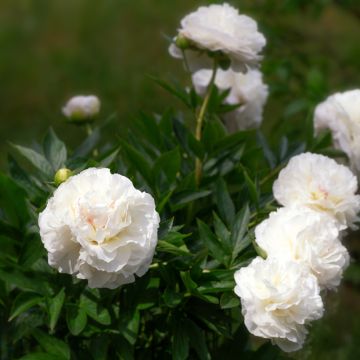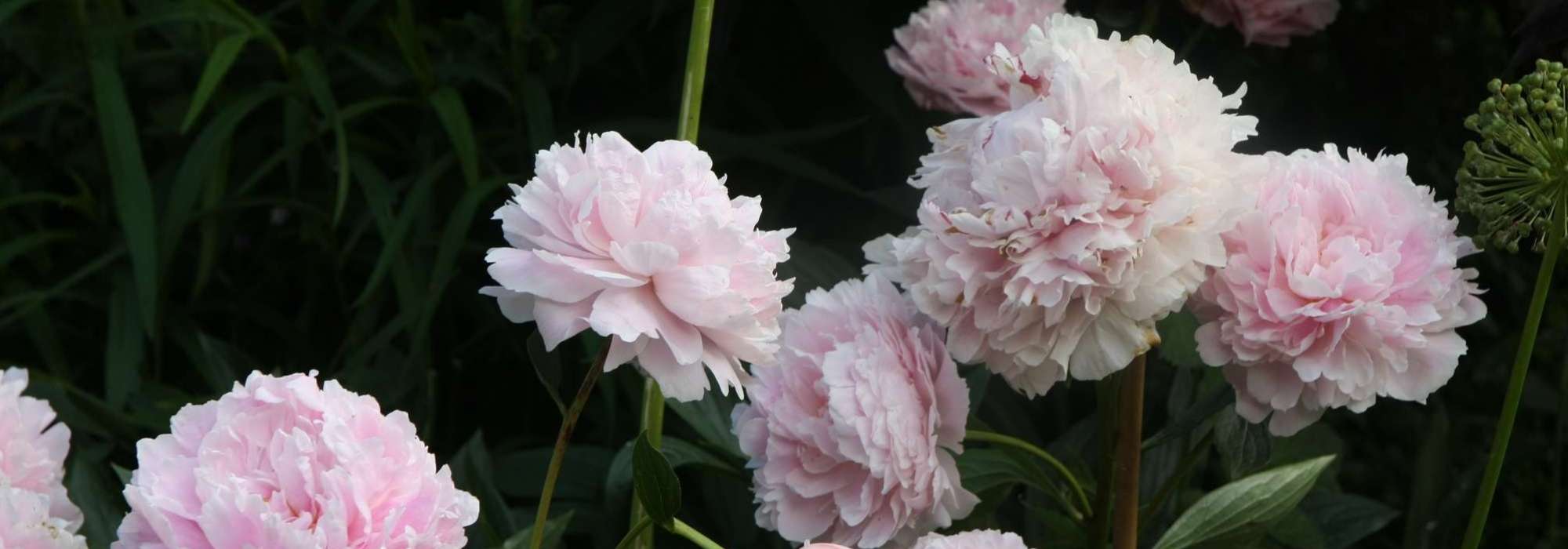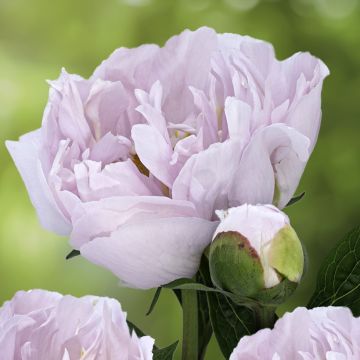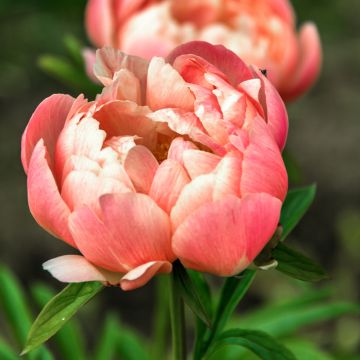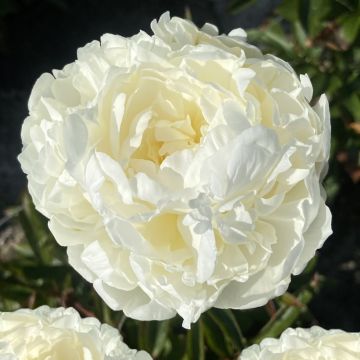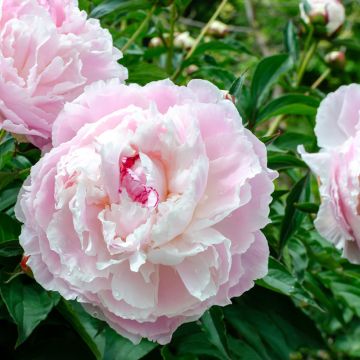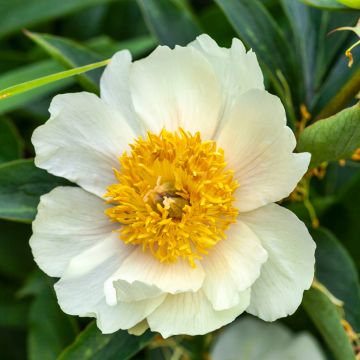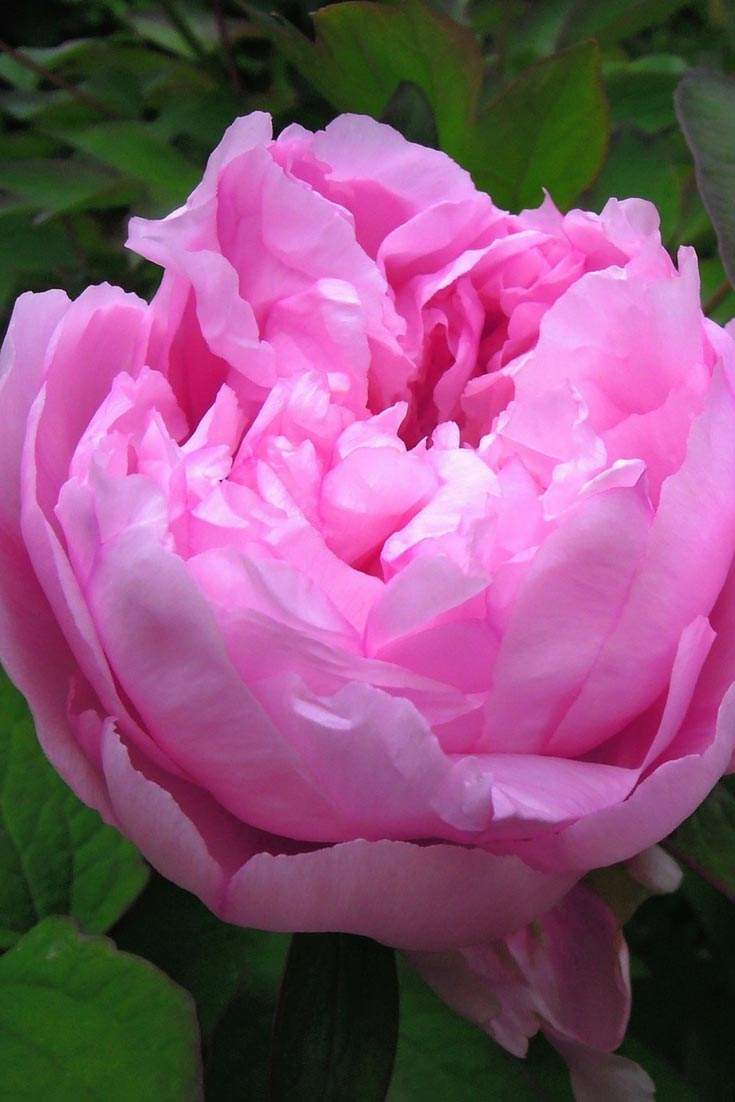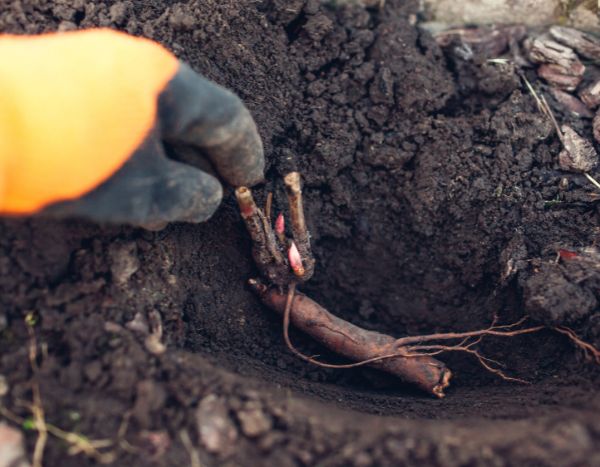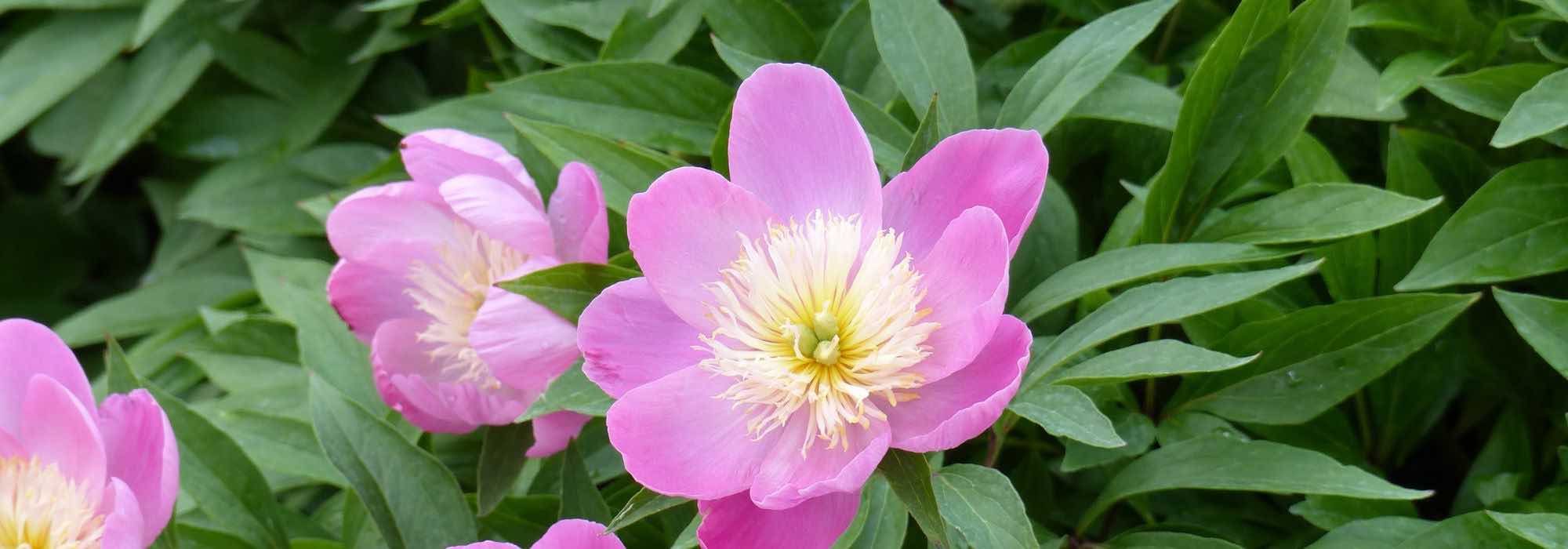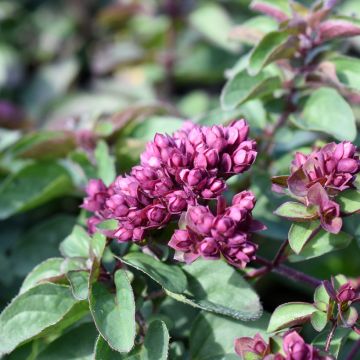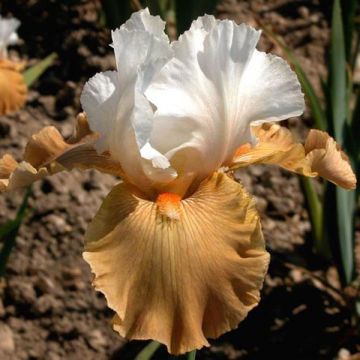

Paeonia mascula


Paeonia mascula


Paeonia mascula


Paeonia mascula


Paeonia mascula
Paeonia mascula
Paeonia mascula
Wild Peony, Male Peony, Coral Peony
My flower has been slow to emerge from the ground, it must be because it's its first year. It is small and doesn't tiller, but I believe peonies tiller after 3 years. I hope it will be happy where it is planted.
Emilie F., 01/05/2018
Special offer!
Receive a €20 voucher for any order over €90 (excluding delivery costs, credit notes, and plastic-free options)!
1- Add your favorite plants to your cart.
2- Once you have reached €90, confirm your order (you can even choose the delivery date!).
3- As soon as your order is shipped, you will receive an email containing your voucher code, valid for 3 months (90 days).
Your voucher is unique and can only be used once, for any order with a minimum value of €20, excluding delivery costs.
Can be combined with other current offers, non-divisible and non-refundable.
Why not try an alternative variety in stock?
View all →This plant carries a 12 months recovery warranty
More information
We guarantee the quality of our plants for a full growing cycle, and will replace at our expense any plant that fails to recover under normal climatic and planting conditions.
Would this plant suit my garden?
Set up your Plantfit profile →
Description
Paeonia mascula, or the male peony, is also called the coral peony, perhaps because of the beautiful coral red colour displayed by some of its seeds. It is a botanical species which has become rare, clearly a victim of insatiable collectors due to the beauty of its large flowers of a satin pink colour. It is recognisable for its bicoloured fruit composed of bright red or black seeds, as well as its foliage, divided into wide and undulate leaflets. Its large pink cup-shaped flowers bloom from March to May depending on the climate. Adopt this endangered plant in your garden and give it what it loves: the dappled atmosphere of the understory and well-drained soil, even clay-limestone and rocky!
The Coral Peony is native to Central and Southern Europe, as well as Asia Minor. Its range extends from France to Russia, passing through Italy. To the south it reaches Algeria. In some places this plant is under high protection status, and its collection is prohibited and subject to criminal penalties. Like all peonies, it belongs to the family of Ranunculaceae (now Paeoniaceae)
It is a perennial herbaceous plant with fleshy rhizomes, very hardy. Its growth is slow during the first years, with this moderately vigorous plant eventually forming a bushy clump of 50-60 cm (20-24in) in height and 40 cm (16in) in width. Its stems bear leaves with different appearances depending on their position on the plant. The lower leaves are divided into two leaflets cut into 3 segments, the upper leaves cut into 3 leaflets with broad undulate segments, pubescent on the underside. The lamina, lightly undulate, is of a slightly glaucous green colour. The flowering lasts only one week, from March to May depending on the climate. The flowers, in the form of single cups of 12 to 14 cm (5 to 6in), solitary, appear at the tips of the stems. They are composed of silky petals, whose colour can vary from fresh pink to purple pink depending on the strains. They are centred on a prominent heart composed of yellow stamens. This flowering is followed by the formation of fluffy and gray fruits containing sterile red seeds and fertile black seeds, round and smooth, which germinate after exposure to cold.
Peonies are among those plants that form the foundations of a garden. In the past every garden, from the humblest to the most elaborate, proudly displayed clumps of peonies that made their way into the house, keeping lilacs and bluebells company in bouquets. The rare and precious coral peony deserves a carefully chosen location, in partial shade and in well-drained soil. It can be planted at the edge of a grove, in the understory, or even in a large rock garden sheltered from the scorching sun. It can be associated with small periwinkles, dry soil ferns (Asplenium trichomanes, Cystopteris dickiana, Dryopteris erythrosora, Polypodium vulgare), or other shade-loving perennial ground cover plants. Pot cultivation is not recommended, as its needs will not be met. Over time the peony becomes majestic, multiplies, and blooms more abundantly.
Paeonia mascula in pictures




Flowering
Foliage
Plant habit
Botanical data
Paeonia
mascula
Ranunculaceae (Paeoniaceae)
Wild Peony, Male Peony, Coral Peony
Mediterranean
Other Herbaceous and hybrid Peonies
View all →Planting and care
Paeonia mascula, like all peonies, does not like to be moved so you have to think carefully about the right place to locate it. The best time to plant is in spring or autumn. Give the stumps a sunny or bright location and deep, well-loosened soil, making sure it is properly drained. Peonies need space and dislike competition from other species. Prepare a hole of 50 x 50 x 50 cm (20in), adding a thin layer of sand or gravel at the bottom to provide drainage around the roots. Mix an organic fertiliser into your soil, partially backfill, place your plants inside and cover with 6 cm (2in) of soil above the eyes. After planting, tamp down and water thoroughly. Once established, this peony generally dispenses with watering in summer, even in a relatively dry summer climate (it grows spontaneously in the wooded hills of Lot, where summers are sometimes hot and relatively dry).
Planting period
Intended location
Care
Planting & care advice
-
, onOrder confirmed
Reply from on Promesse de fleurs
Similar products
Haven't found what you were looking for?
Hardiness is the lowest winter temperature a plant can endure without suffering serious damage or even dying. However, hardiness is affected by location (a sheltered area, such as a patio), protection (winter cover) and soil type (hardiness is improved by well-drained soil).

Photo Sharing Terms & Conditions
In order to encourage gardeners to interact and share their experiences, Promesse de fleurs offers various media enabling content to be uploaded onto its Site - in particular via the ‘Photo sharing’ module.
The User agrees to refrain from:
- Posting any content that is illegal, prejudicial, insulting, racist, inciteful to hatred, revisionist, contrary to public decency, that infringes on privacy or on the privacy rights of third parties, in particular the publicity rights of persons and goods, intellectual property rights, or the right to privacy.
- Submitting content on behalf of a third party;
- Impersonate the identity of a third party and/or publish any personal information about a third party;
In general, the User undertakes to refrain from any unethical behaviour.
All Content (in particular text, comments, files, images, photos, videos, creative works, etc.), which may be subject to property or intellectual property rights, image or other private rights, shall remain the property of the User, subject to the limited rights granted by the terms of the licence granted by Promesse de fleurs as stated below. Users are at liberty to publish or not to publish such Content on the Site, notably via the ‘Photo Sharing’ facility, and accept that this Content shall be made public and freely accessible, notably on the Internet.
Users further acknowledge, undertake to have ,and guarantee that they hold all necessary rights and permissions to publish such material on the Site, in particular with regard to the legislation in force pertaining to any privacy, property, intellectual property, image, or contractual rights, or rights of any other nature. By publishing such Content on the Site, Users acknowledge accepting full liability as publishers of the Content within the meaning of the law, and grant Promesse de fleurs, free of charge, an inclusive, worldwide licence for the said Content for the entire duration of its publication, including all reproduction, representation, up/downloading, displaying, performing, transmission, and storage rights.
Users also grant permission for their name to be linked to the Content and accept that this link may not always be made available.
By engaging in posting material, Users consent to their Content becoming automatically accessible on the Internet, in particular on other sites and/or blogs and/or web pages of the Promesse de fleurs site, including in particular social pages and the Promesse de fleurs catalogue.
Users may secure the removal of entrusted content free of charge by issuing a simple request via our contact form.
The flowering period indicated on our website applies to countries and regions located in USDA zone 8 (France, the United Kingdom, Ireland, the Netherlands, etc.)
It will vary according to where you live:
- In zones 9 to 10 (Italy, Spain, Greece, etc.), flowering will occur about 2 to 4 weeks earlier.
- In zones 6 to 7 (Germany, Poland, Slovenia, and lower mountainous regions), flowering will be delayed by 2 to 3 weeks.
- In zone 5 (Central Europe, Scandinavia), blooming will be delayed by 3 to 5 weeks.
In temperate climates, pruning of spring-flowering shrubs (forsythia, spireas, etc.) should be done just after flowering.
Pruning of summer-flowering shrubs (Indian Lilac, Perovskia, etc.) can be done in winter or spring.
In cold regions as well as with frost-sensitive plants, avoid pruning too early when severe frosts may still occur.
The planting period indicated on our website applies to countries and regions located in USDA zone 8 (France, United Kingdom, Ireland, Netherlands).
It will vary according to where you live:
- In Mediterranean zones (Marseille, Madrid, Milan, etc.), autumn and winter are the best planting periods.
- In continental zones (Strasbourg, Munich, Vienna, etc.), delay planting by 2 to 3 weeks in spring and bring it forward by 2 to 4 weeks in autumn.
- In mountainous regions (the Alps, Pyrenees, Carpathians, etc.), it is best to plant in late spring (May-June) or late summer (August-September).
The harvesting period indicated on our website applies to countries and regions in USDA zone 8 (France, England, Ireland, the Netherlands).
In colder areas (Scandinavia, Poland, Austria...) fruit and vegetable harvests are likely to be delayed by 3-4 weeks.
In warmer areas (Italy, Spain, Greece, etc.), harvesting will probably take place earlier, depending on weather conditions.
The sowing periods indicated on our website apply to countries and regions within USDA Zone 8 (France, UK, Ireland, Netherlands).
In colder areas (Scandinavia, Poland, Austria...), delay any outdoor sowing by 3-4 weeks, or sow under glass.
In warmer climes (Italy, Spain, Greece, etc.), bring outdoor sowing forward by a few weeks.































